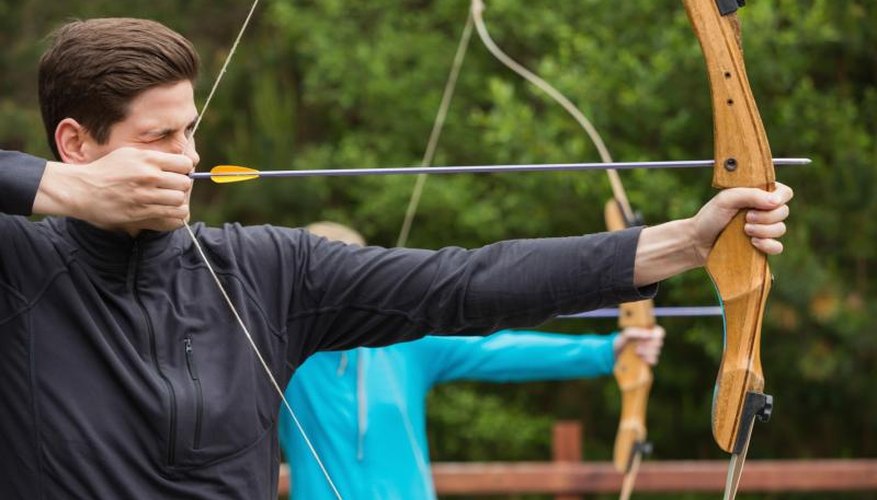
Making a bow and arrow is a laborious process that often involves plenty of trial and error, but it's hard not to appreciate the satisfaction of watching an arrow fly from a bow you've carved yourself. A lot of options are available when it comes to bow-making materials and techniques, but starting with the ideal wood is one of the best ways to ensure success.
Best Wood for Bows
Two important characteristics determine the suitability of wood for bow making: strength and flexibility. The wood must be able to bend without breaking. The two most commonly used bow woods are Pacific yew and Osage orange. Pacific yew is extremely strong under compression, and Sam Harper of Poor Folk Bows calls Osage "the ideal bow wood." The downside of both these woods is that they can be expensive and difficult to find. In a pinch, more common hardwoods like oak and hickory can also make excellent bows.
Best Wood for Arrows
There are a few things to consider when selecting wood for arrows, including weight and grain straightness. Ideally, the grain should be as straight as possible, with no twisting or knots. Weight is more a matter of personal preference, but heavy arrows typically work better with heavier bows, and vice versa. Port Orford cedar is widely considered to be the best arrow wood, with light to moderate weight and fairly straight grain. The downside is lack of durability, which can lead to broken arrows. Another option is Douglas fir, which is more durable but harder to find with straight grain.
References
Writer Bio
When Richard Corrigan isn't writing about the outdoors, he's probably outside experiencing them firsthand. Since starting out as a writer in 2009, he has written for USA Today, the National Parks Foundation and LIVESTRONG.com, among many others, and enjoys combining his love of writing with his passion for hiking, biking, camping and fishing.



